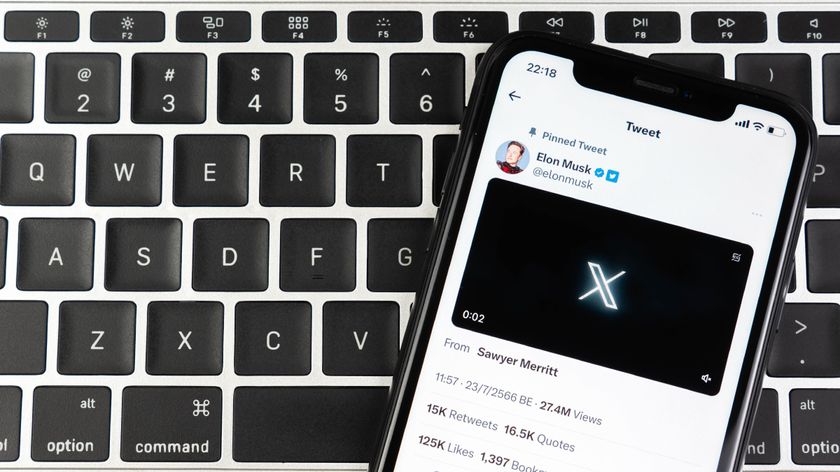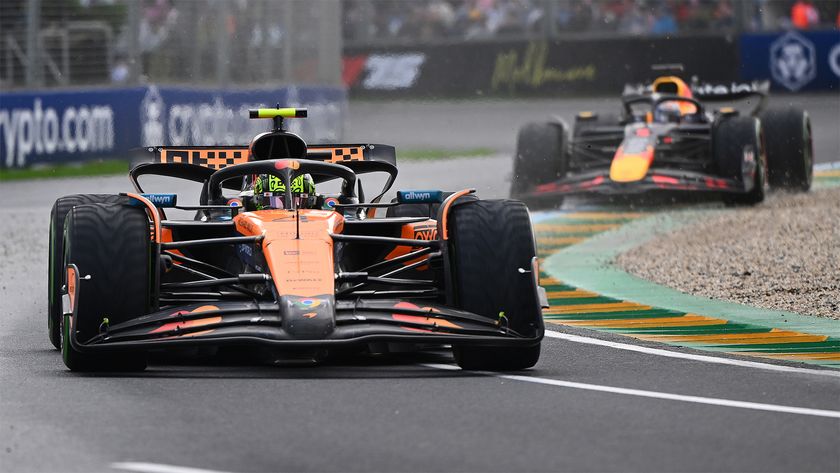Watch a replay of Elon Musk launching his Tesla Roadster into space on a Mars rocket
There's now a Tesla in space
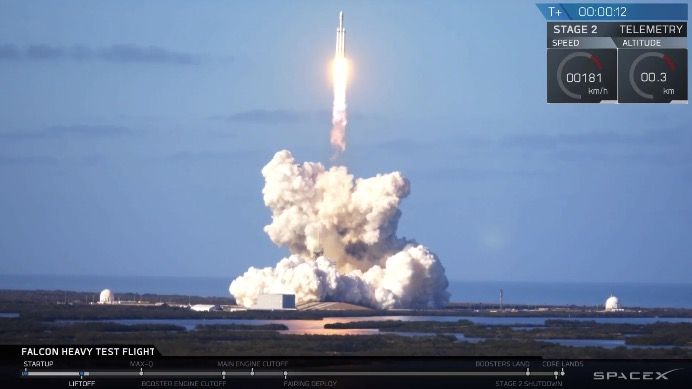
The SpaceX Falcon Heavy rocket launched into space on Tuesday, February 6 with Elon Musk's personal Tesla Roadster as its payload. The world's most powerful rocket blasted off from Florida at 12:45pm PT/3:45pm ET/8:45pm GMT, or 7:45am AEST on Wednesday, February 7.
The excitement was palpable as the boosters fired up and the rocket left the ground before successfully heading into space. Also important, the rocket's side boosters pulled off perfect landings back on Earth, which means they can be reused in later launches.
The one blemish on an otherwise wildly successful day is the failure of the core booster to land on a drone ship, as confirmed by Musk. The booster apparently ran out of propellant, meaning it couldn't slow down enough to pull off a successful landing and hit the ocean surface at 300mph, according to Engadget. It also missed the drone ship itself by about 100 meters.
Despite the failed center core landing, every other element of the Falcon Heavy launch and the landing of the two side boosters went smoothly.
You can watch a replay of the SpaceX Falcon Heavy launch below. Just skip ahead to around the 21:30 mark.
We just witnessed a rocket with power that has not been seen since the moon missions of the late 1960s and 1970s lift off the ground. But nearly as exciting as this is Falcon Heavy's cargo: Musk's personal cherry red Tesla Roadster just got launched into space.
While SpaceX is famous for its Mars exploration ambitions, the Roadster – and a 'Starman' dummy driver made of a SpaceX spacesuit – won't actually be in Mars orbit, according to The Verge. It will come close, though, and the Roadster will go into an orbit around the sun that's the same distance as Mars' orbit around the sun. That is, if it makes it out of Earth's orbit.
Get daily insight, inspiration and deals in your inbox
Sign up for breaking news, reviews, opinion, top tech deals, and more.
If you want to watch Starman flying around in space, you can catch SpaceX's Live Views of Starman over on YouTube.
Here are a few images from today's launch




Original story continues below...
What exactly is SpaceX doing?
Falcon Heavy is described as “the most powerful operational rocket in the world by a factor of two” by SpaceX.
Although its now trademark landing of the first-stage booster has lost some of its novelty appeal, the Falcon Heavy test launch promises to be very special. "You will really like Falcon Heavy next month: 3 rocket cores & 3X thrust," tweeted SpaceX CEO Elon Musk in late December. "2 cores return to base doing synchronized aerobatics. 3rd lands on droneship."
If the launch is successful, that payload will be headed into deep space. Is Musk – also a co-founder of Tesla – confident? It seems so. He's placed his own cherry-red Tesla Roadster in the payload.
What is Falcon Heavy?
SpaceX has now launched 47 of its Falcon 9 rockets, including 13 resupply missions to the International Space Station (ISS). However, most missions are to insert small satellites into low Earth orbits, which are easily handled by a single Falcon 9 rocket. Musk wants to reach out much further into space than that, and with bigger ambitions comes the need for a much more powerful launch vehicle.
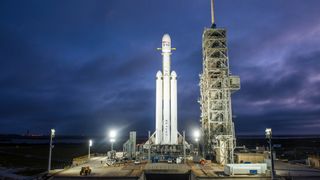
Falcon Heavy is not particularly innovative. It's effectively a single upper stage on top of three Falcon 9 rocket cores, and stands 70m tall and 12.2m wide. However, those three rocket cores each use nine Merlin 1D engines that together can carry 60 tons into low Earth orbit, something no rocket has done since the Saturn V 'moon rocket' (though NASA's rocket was twice the weight). As a bonus, the second stage’s engine can be restarted many times, making multiple orbits possible.
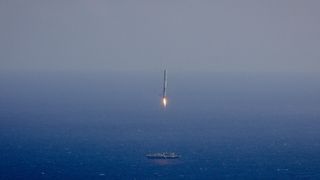
Falcon Heavy will leave from KSC's Launch Pad 39A, exactly where the Apollo 11 moon landing mission left from, as well as the last Space Shuttle launch. Two of Falcon Heavy's cores have been used on previous missions, and again, these will re-land simultaneously just down the coast from KSC at Cape Canaveral Air Force Station. The main booster will then attempt to land on a barge in the Atlantic Ocean as the payload heads for orbit.
When is the Falcon Heavy launch date?
After weeks of delays, the Falcon Heavy launch date is set for Tuesday, February 6. It is now scheduled to take off at 12:45pm PT/3:45pm ET/8:45pm GMT, or 7:45am AEST on Wednesday, February 7 if weather and other factors permit.
The launch window of two-and-a-half hours opened at 1:30pm ET, so SpaceX is cutting it close. It's likely that SpaceX will play it extremely safe and not launch the rocket if factors are not optimal.
SpaceX created an animated simulation of the launch, complete with the Tesla Roadster in the cargo hold, which you can watch below – note the soundtrack.
Why is Elon Musk sending his own car to Mars?
Because boring is terrible, that's why. "Payload will be my midnight cherry Tesla Roadster playing Space Oddity," Musk tweeted in December. "Destination is Mars orbit. Will be in deep space for a billion years or so if it doesn’t blow up on ascent.” It's been planned for many years, so the inaugural flight of the Falcon Heavy is a pretty special event for Musk.
Under the title 'A Red Car for the Red Planet', Musk posted to Instagram an image of his Roadster inside the Falcon Heavy payload. "Test flights of new rockets usually contain mass simulators in the form of concrete or steel blocks," wrote Musk. "That seemed extremely boring. Of course, anything boring is terrible, especially companies, so we decided to send something unusual, something that made us feel."
However, don't assume that the Roadster will be at Mars anytime soon – its trajectory is a "billion year elliptic Mars orbit".
Starman in Red Roadster Elon Musk
A photo posted by @elonmusk on Feb 4, 2018 at 9:50pm PST
How to watch the Falcon Heavy test launch
The launch promises to be anything but boring, and there's even the chance the rocket could explode. "There's a lot of risk associated with Falcon Heavy, a real good chance that that vehicle does not make it to orbit," said Musk to the ISS R&D Conference in Washington, D.C. on July 19.
There are grounds to be nervous about Falcon Heavy because SpaceX's safety and reliability record with Falcon 9 rockets is not spotless. On January 9 this year, Zuma, a satellite cloaked in secrecy, failed to reach orbit, while in 2016 a Falcon 9 exploded on the launch pad during preparations for a static fire test. In 2015, one exploded just after launch while on its way to the ISS.
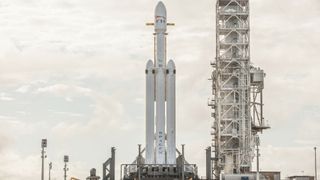
The Falcon Heavy test launch may be a nervous watch for Musk, but if it gets off the ground then observers will also be able to watch the simultaneous landing of two booster rockets just down the coast from KSC at Cape Canaveral Air Force Station. You can tune into both events via SpaceX's live webcast or on the simulcast on the SpaceX YouTube channel.
Tickets to watch the launch in person are sold out, so your best bet is to watch via one of the two sources above at home or at work.
Why is Falcon Heavy so important?
As well as being able to take big satellites to low Earth orbit – most likely its day job – Falcon Heavy could transport 16.8 tonnes to Mars. That could include SpaceX's own Dragon capsule, a spacecraft designed to carry astronauts, though it's more likely to take supplies into orbit around the Red Planet in advance of any manned landing.
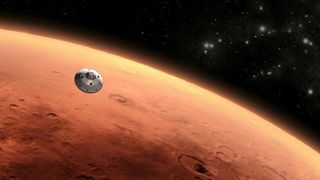
The rocket 'restores the possibility of flying missions with crew to the Moon or Mars', according to the SpaceX website, though for astronauts the company has already previewed its Interplanetary Transport System, with plans to use a larger concept called, for now, the Big Falcon Rocket.
So far, Falcon Heavy is a completely untested, experimental rocket. Rocketry is immensely complicated, requiring constant checking and rechecking for even the smallest of test procedures. Falcon Heavy's hundred tons of cryogenic liquid oxygen and rocket-grade jet fuel is the underlying reason why it's dangerous, but the five million pounds of thrust it gives Falcon Heavy at liftoff is also why you should watch it all go smoothly. Or, catastrophically. As Musk has said: "One way or another, launch is guaranteed to be exciting."
- Another type of galaxy: Get ready for the Samsung Galaxy S9
Jamie is a freelance tech, travel and space journalist based in the UK. He’s been writing regularly for Techradar since it was launched in 2008 and also writes regularly for Forbes, The Telegraph, the South China Morning Post, Sky & Telescope and the Sky At Night magazine as well as other Future titles T3, Digital Camera World, All About Space and Space.com. He also edits two of his own websites, TravGear.com and WhenIsTheNextEclipse.com that reflect his obsession with travel gear and solar eclipse travel. He is the author of A Stargazing Program For Beginners (Springer, 2015),








